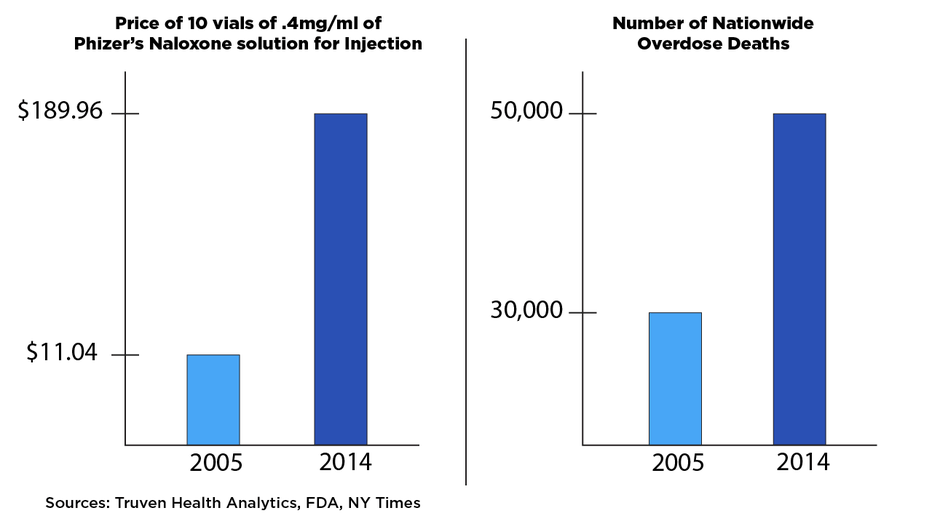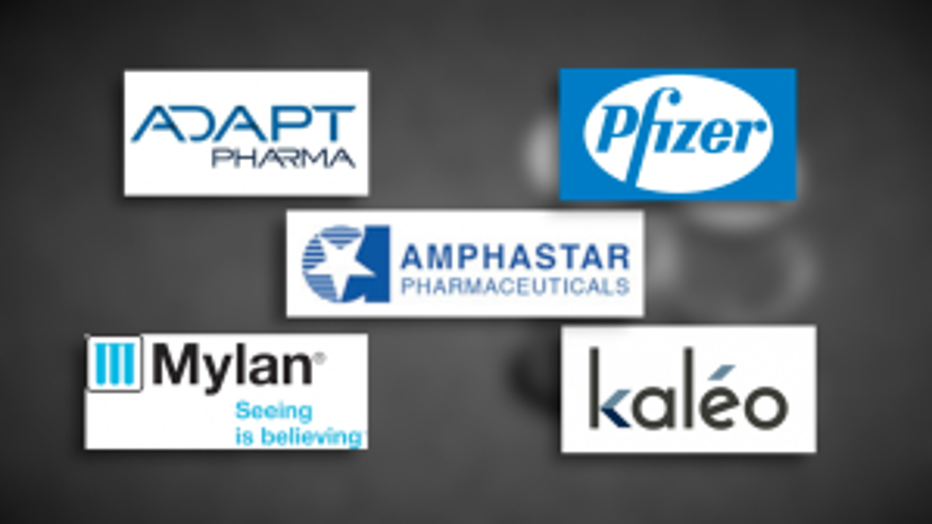The cost of waking up: Price of lifesaving drug skyrockets, putting Puget Sound lives at risk
SEATTLE -- On a grey day in January, 24-year-old Dillon lay sprawled in a Seattle alleyway overdosing on heroin.
His tattered sweater balled around his neck, he stared blankly at the sky. He struggled to breath. Police officers crowded around his limp body.
"I went down this alleyway and I woke up in an ambulance," Dillon said.
Now 100 days clean, Dillon recalls his overdose story from a Fremont Park. He says that moment - sprawled in a cold alley - changed him for good.
"Not only that event happening, but to have my parents see that video is really tough," he said. "You know no parent should ever have to see their child dead in an alleyway."
Dillon's life was saved when officers administered naloxone, a heroin antidote that can reverse the effects of an opioid overdose. Officers have used the lifesaving drug 19 times in the past two months, most recently when a 40-year-old man was found slumped in a doorway. As the region's heroin epidemic rages on, first responders, local agencies and everyday people are carrying the drug to help keep opioid addicts alive.
But saving lives comes at a cost. And as drug overdoses become the leading cause of death among Americans under 50, pharmaceutical companies are raising their price on naloxone to record amounts.
Putting stories of recovery like Dillon's in grave jeopardy.
Watch Above: Raw interview with Dillon following his near-death overdose
The profit of overdoses
What happened to Dillon happens every day. Seattle police officers and tens of other local agencies carry naloxone. Doctors prescribe it. Addiction support groups give it away for free.
It's in such high demand, the life-saver has become a big business opportunity for drug companies.
Five manufacturers make naloxone: Adapt Pharma, Kaleo, Amphastar, Pfizer, and Mylan. Nearly all of them are dramatically raising prices after the Drug Enforcement Agency released numbers showing in 2013 opioid related deaths surpassed car accidents.

The Seattle Police Department and King County Public Health use Amphastar’s brand. That company’s price has nearly doubled from 2001 to 2014.
“If you have lack of competition and you’re protected by the Food and Drug Administration restricting other entrants into the market, then you’re going to charge whatever you can,” said Washington Policy Center Healthcare Policy Analyst Ret. Physician Dr. Roger Stark.
Stark has testified in front of congress on numerous occasions. He says the price jump in naloxone is simply a case of supply and demand.
“If you can charge those prices they will,” said Dr. Stark.

Take Pfizer for instance. Numbers from Truven Health Analytics show one dosage used to cost $9.20 and jumped to $109.90 in 2013. It’s a product used by the Point Defiance AIDS Project and the People’s Harm Reduction Alliance.
We saw staff at the People’s Harm Reduction Alliance teaching a class on how to administer Pfizer’s injectable naloxone in March. They say the drug is so expensive, they have to restrict how much they pass out.
“We’ve had to limit the amount that we can give out," said Autum with the People's Harm Reduction Alliance. "We used to be able to give out this unlimited supply now we’ve had to kind of ration. We are currently giving out ten kits a day.”
The most notable recent price spike comes from a company called Kale who produces the auto-injector named Evzio. A two-pack of the auto-injecter in 2014 cost $690. Today, it costs a whopping $4,500.
Despite the sticker shock, Kaleo and Adapt Pharma tell Q13 News they offer discounts and even free products to local government agencies and non-profits.
Both companies also tell Q13 News that the Wholesale Acquisition Cost of WAC is not normally what the average agency or person pays for the drug.
"To date, we have donated nearly 200,000 naloxone auto-injectors to public health departments, first responders and non-profits serving patients in need," Kaleo's CEO Spencer Williamson wrote Q13 News. "We plan to donate 100,00 more auto-injectors in 2017."
The true cost
Michael Polgar of People's Harm Reduction Alliance said the impact of the skyrocketing cost of the drug is simple: It's hurting people and hurting lives.
"It's just another thing for the pharmaceutical companies to profit off of," Polger, a recovering heroin addict, said.
The People's Harm Reduction Alliance works with clients who use naloxone. Polger said the clients need the drug to be cheap.
Learn More: Michael Polgar talks about his overdoses, and how Naloxone saved him
“The more people who know how to use it, the more accessible it is, the cheaper it is, the more lives we can save,” said Polgar.
Michael is one of those saved lives. He credits the drug Naloxone with giving him that chance.
That’s what he wants for other opioid addicts. A chance. But he fears the rising costs of naloxone will mean fewer people may get the shot.
Learn more about Congress stepping in to lower the cost of naloxone.

